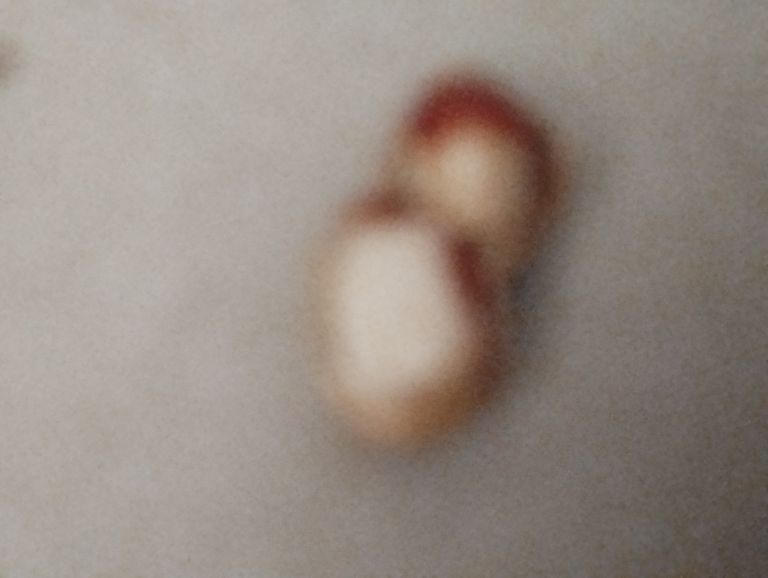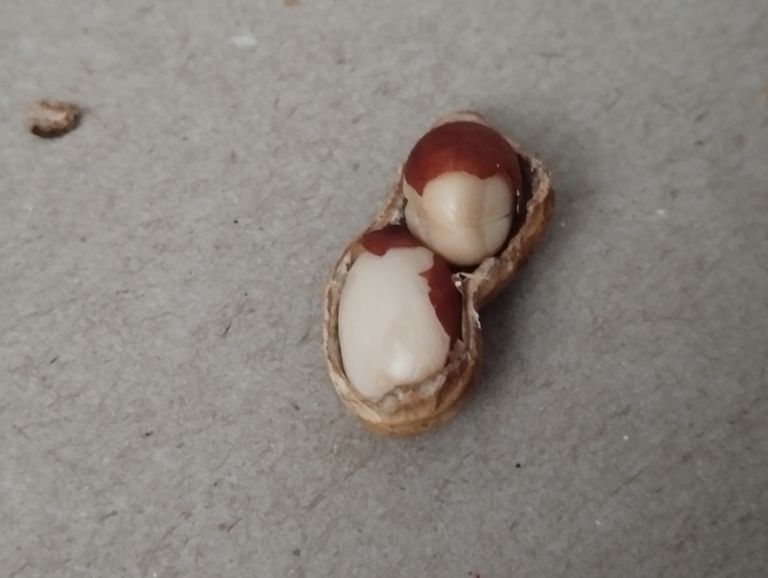
Health Benefits of Eating Nuts.
Nuts are one of nature’s most nutritious and delicious snacks. They are packed with essential nutrients, healthy fats, protein, vitamins, and minerals that contribute to overall well-being. Whether you prefer almonds, walnuts, cashews, peanuts, or pistachios, consuming nuts regularly can offer numerous health benefits. In this blog, we will explore the various advantages of eating nuts and how they can improve your health.
- Rich in Nutrients
Nuts are a powerhouse of nutrients, providing essential vitamins and minerals that support overall health. Here are some key nutrients found in different types of nuts:
Almonds: High in Vitamin E, magnesium, and fiber
Walnuts: Rich in omega-3 fatty acids and antioxidants
Cashews: Good source of iron, zinc, and healthy fats
Peanuts: Packed with protein, folate, and niacin
Pistachios: High in potassium, fiber, and Vitamin B6
By including a variety of nuts in your diet, you can ensure a well-rounded intake of these essential nutrients.
- Supports Heart Health
Nuts are well known for their heart-healthy benefits. They contain unsaturated fats, which help lower bad cholesterol (LDL) and increase good cholesterol (HDL). Additionally, nuts are rich in antioxidants and omega-3 fatty acids, which reduce inflammation and lower the risk of heart disease.
A study published in the American Journal of Clinical Nutrition found that people who regularly consume nuts have a lower risk of heart attacks and strokes. Almonds, walnuts, and pistachios are particularly beneficial for cardiovascular health.
- Aids in Weight Management
Despite being calorie-dense, nuts can help with weight management. They are rich in protein and fiber, which promote satiety and reduce hunger cravings. Research suggests that people who eat nuts regularly tend to have a lower body mass index (BMI) compared to those who do not consume nuts.
Peanuts and almonds, in particular, are great for keeping you full longer and preventing unhealthy snacking. Eating a handful of nuts as a snack can help control appetite and maintain a healthy weight.
- Improves Brain Function
Nuts are often referred to as "brain food" due to their high content of healthy fats, antioxidants, and essential nutrients. Walnuts, in particular, are rich in DHA, an omega-3 fatty acid that supports cognitive function and reduces the risk of neurodegenerative diseases like Alzheimer's.
Regular consumption of nuts has been linked to improved memory, concentration, and mental clarity. Vitamin E in almonds also plays a crucial role in protecting brain cells from oxidative stress.
- Reduces the Risk of Diabetes
Nuts have a low glycemic index, meaning they do not cause a rapid spike in blood sugar levels. Studies show that consuming nuts regularly can help improve insulin sensitivity and reduce the risk of type 2 diabetes.
Almonds, walnuts, and peanuts are particularly effective in regulating blood sugar levels. Adding nuts to meals can also slow down carbohydrate absorption, preventing sudden spikes in blood glucose.
- Strengthens Bones and Joints
Many nuts, especially almonds and cashews, are rich in calcium, magnesium, and phosphorus, which are essential for bone health. These minerals help strengthen bones, reduce the risk of osteoporosis, and support overall joint health.
Cashews also contain copper, which plays a vital role in collagen formation and maintaining healthy joints. Including nuts in your diet can contribute to stronger bones and prevent age-related bone diseases.
- Boosts Immunity
Nuts are packed with antioxidants, vitamins, and minerals that strengthen the immune system. Vitamin E, zinc, and selenium found in nuts help the body fight infections and reduce inflammation.
Brazil nuts, in particular, are an excellent source of selenium, which enhances immune function and protects against oxidative stress. A handful of mixed nuts daily can help improve your body’s ability to fight off diseases.
- Enhances Skin and Hair Health
Nuts are a great source of Vitamin E and healthy fats, both of which promote glowing skin and healthy hair. Vitamin E acts as an antioxidant, protecting the skin from damage caused by free radicals and UV rays.
Almonds and walnuts help keep the skin hydrated and reduce signs of aging. Meanwhile, biotin and zinc in cashews and peanuts promote hair growth and prevent hair loss.
- Supports Digestive Health
Nuts are rich in dietary fiber, which aids digestion and promotes gut health. Fiber helps regulate bowel movements, prevent constipation, and support a healthy gut microbiome.
Pistachios and almonds contain prebiotics, which nourish beneficial gut bacteria and improve digestion. Including fiber-rich nuts in your diet can enhance overall gut health and prevent digestive issues.
- Reduces Stress and Improves Mood
Nuts are rich in magnesium, a mineral that helps reduce stress and anxiety. Studies have shown that magnesium deficiency is linked to increased stress levels, mood swings, and even depression.
Cashews, in particular, are known for their mood-boosting properties due to their high tryptophan content, which helps produce serotonin, the "happy hormone." Eating nuts regularly can contribute to better mental health and emotional well-being.
How to Include Nuts in Your Diet
There are many delicious and easy ways to add nuts to your daily meals:
Snack on a handful of mixed nuts instead of processed snacks.
Add chopped almonds or walnuts to oatmeal or yogurt.
Blend cashews into smoothies for a creamy texture.
Sprinkle pistachios on salads for a crunchy topping.
Use nut butters (like peanut butter or almond butter) on toast or in smoothies.
Cook with nuts by adding them to stir-fries, curries, or baked goods.
Precautions and Considerations
While nuts are highly nutritious, it is important to consume them in moderation:
Portion Control: Nuts are calorie-dense, so consuming excessive amounts may lead to weight gain. A recommended serving is about a handful (28-30 grams) per day.
Allergies: Some people are allergic to nuts, particularly peanuts. If you have a nut allergy, avoid consuming nuts and check food labels carefully.
Salt and Sugar Content: Opt for unsalted and unsweetened nuts to avoid added sodium and sugar. Raw or dry-roasted nuts are the healthiest choices.
Conclusion
Eating nuts regularly can provide numerous health benefits, from improving heart health and brain function to boosting immunity and enhancing skin health. Their rich nutrient profile makes them an excellent addition to a balanced diet. Whether you enjoy them as a snack, in meals, or as nut butter, nuts are a delicious and healthy way to nourish your body.
Make nuts a part of your daily diet and enjoy their incredible health benefits.
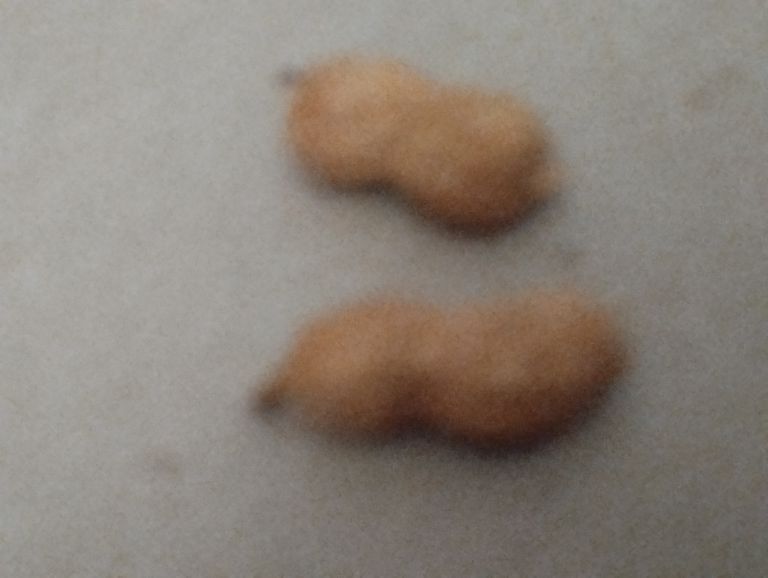
How to Plant Peanuts: A Complete Guide
Peanuts (Arachis hypogaea) are a versatile and nutritious crop that can be grown in warm climates. Whether you're a home gardener or a commercial farmer, knowing the right techniques for planting and caring for peanuts will help ensure a healthy and productive harvest. This guide covers everything from soil preparation to harvesting and storage.
- Understanding Peanut Plants
Peanuts are unique because they grow underground. They belong to the legume family, meaning they can fix nitrogen in the soil, reducing the need for fertilizers. There are four main types of peanuts:
Runner Peanuts – Commonly used for peanut butter.
Virginia Peanuts – Large peanuts, often used for roasting.
Spanish Peanuts – Small peanuts with a reddish skin, used in candies.
Valencia Peanuts – Sweet peanuts with three or more kernels per shell.
- Best Climate and Soil for Peanuts
Peanuts grow best in warm climates with at least 120-150 frost-free days. They thrive in sandy, well-drained soil with a pH between 5.8 and 6.2. Heavy clay or waterlogged soils can hinder root development.
Preparing the Soil
Choose a location with full sunlight.
Loosen the soil to a depth of 10-12 inches to promote root penetration.
Add organic matter like compost or aged manure to improve soil fertility.
Ensure proper drainage to prevent root rot.
- Planting Peanuts
Peanuts are usually grown from raw, unsalted peanuts with the shell removed.
Step-by-Step Planting Guide
- When to Plant – Plant peanuts in late spring after the last frost when the soil temperature reaches at least 65°F (18°C).
- Seed Preparation – Use fresh, raw peanut seeds with their skins intact.
- Planting Depth & Spacing –
Sow seeds 1-2 inches deep.
Space them 6-8 inches apart in rows 24-36 inches apart.
- Watering – Keep the soil moist but not waterlogged.
- Peanut Plant Care
Watering
Peanuts need about 1 inch of water per week.
Reduce watering 2-3 weeks before harvest to help the peanuts dry out.
Fertilization
Peanuts fix their own nitrogen, so they need little nitrogen fertilizer.
Apply calcium-rich fertilizer when flowers begin to bloom to support pod development.
Weeding & Mulching
Keep the field weed-free, especially during early growth stages.
Use organic mulch to retain moisture and suppress weeds.
- Flowering and Pegging
Peanut plants start flowering 30-40 days after planting. After pollination, a structure called a peg grows downward into the soil, where the peanuts develop underground. Ensure soft, loose soil to help the pegs penetrate easily.
- Harvesting Peanuts
Peanuts are ready for harvest 120-150 days after planting when:
Leaves turn yellow.
Pods have a firm outer shell with mature kernels inside.
How to Harvest
- Uproot the plants gently using a garden fork or spade.
- Shake off excess soil and leave the plants in the sun for 2-3 days to dry.
- Hang them in a well-ventilated area for another 2-4 weeks to cure.
- Storing Peanuts
Unshelled peanuts can be stored in a dry, cool place for months.
Shelled peanuts should be kept in airtight containers.
For long-term storage, freeze raw peanuts to preserve freshness.
Growing peanuts is rewarding and relatively simple with the right conditions. By following proper soil preparation, watering, and harvesting techniques, you can enjoy a bountiful peanut harvest. Whether for home use or commercial production, peanuts offer a nutritious and profitable crop option. Happy planting.
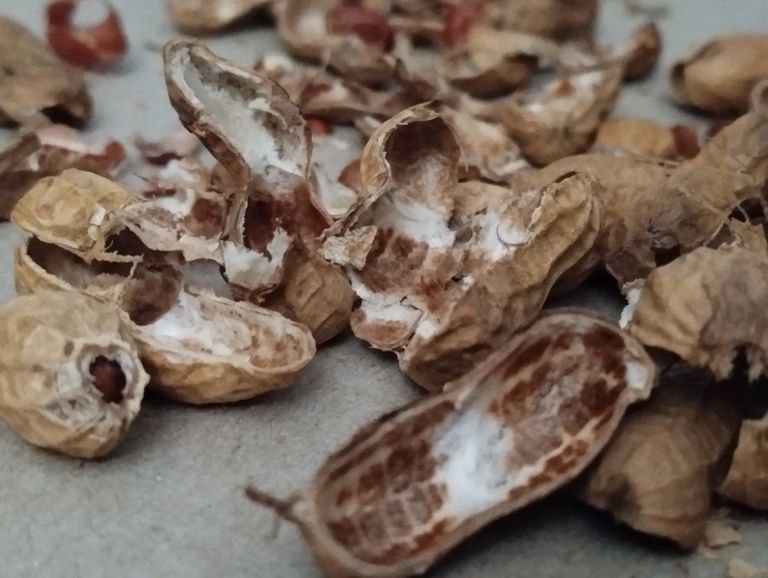
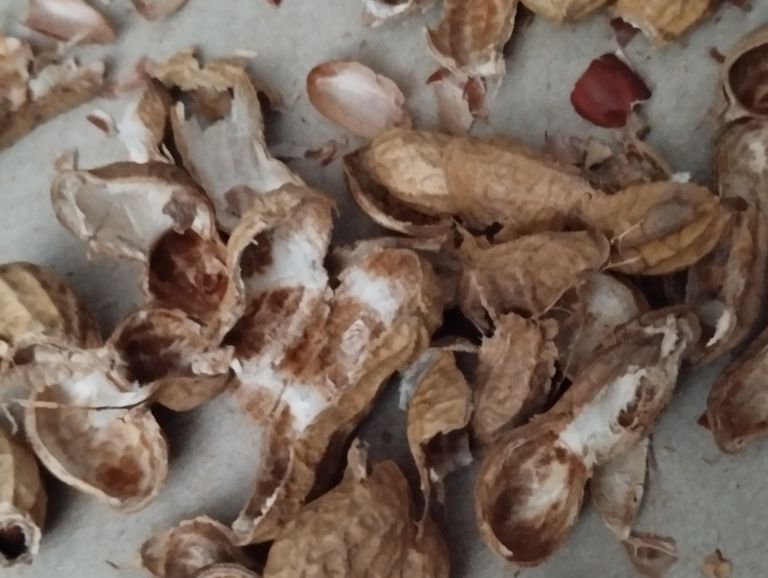
Common Diseases and Pests of Peanut Plants: Identification, Prevention, and Control
Peanut (Arachis hypogaea) is a vital crop cultivated worldwide for its edible seeds, oil, and protein content. However, peanut plants are susceptible to various diseases and pests that can significantly reduce yield and quality. Understanding these issues is crucial for farmers to take preventive and curative measures. This blog provides an in-depth look at the common diseases and pests affecting peanut plants, their symptoms, and effective management strategies.
- Common Diseases of Peanut Plants
Peanut crops are vulnerable to fungal, bacterial, and viral diseases. Below are some of the most common diseases, their causes, symptoms, and control measures.
A. Fungal Diseases
i. Early Leaf Spot (Cercospora arachidicola)
Symptoms:
Small brown spots with yellow halos on the leaves
Lesions enlarge, merge, and cause premature defoliation
Reduced photosynthesis and lower yields
Control Measures:
Rotate crops with non-host plants
Use resistant peanut varieties
Apply fungicides like chlorothalonil and tebuconazole
ii. Late Leaf Spot (Phaeoisariopsis personata)
Symptoms:
Dark brown to black spots with indistinct edges on leaves
Leaf curling and severe defoliation
Reduced plant vigor and pod development
Control Measures:
Plant disease-resistant peanut varieties
Apply fungicides like azoxystrobin or mancozeb
Maintain proper field sanitation
iii. Rust (Puccinia arachidis)
Symptoms:
Orange-brown pustules on the undersides of leaves
Premature leaf drop and stunted plant growth
Reduced pod size and yield
Control Measures:
Apply sulfur-based fungicides
Grow rust-resistant peanut cultivars
Ensure proper spacing for good air circulation
iv. Stem Rot (Sclerotium rolfsii)
Symptoms:
White fungal growth at the base of the stem
Wilting and death of the plant
Rotting of pegs and pods
Control Measures:
Use deep plowing to bury infected debris
Apply fungicides like tebuconazole and carbendazim
Avoid excessive irrigation
B. Bacterial Diseases
i. Bacterial Wilt (Ralstonia solanacearum)
Symptoms:
Sudden wilting of young plants
Brown discoloration of vascular tissues
Death of affected plants
Control Measures:
Use disease-free seeds
Implement crop rotation with non-host species
Maintain well-drained soil conditions
C. Viral Diseases
i. Peanut Bud Necrosis Virus (PBNV)
Symptoms:
Necrotic rings on leaves and stems
Stunted growth and distorted leaves
Reduced pod formation
Control Measures:
Control thrips (the primary vector) using insecticides
Use virus-resistant peanut varieties
Remove and destroy infected plants
- Common Pests Affecting Peanut Plants
Various insect pests attack peanut plants, leading to reduced yields. Below are some of the most damaging pests and their management strategies.
A. Soil-Dwelling Pests
i. Termites (Microtermes spp., Odontotermes spp.)
Damage:
Feed on underground pods and roots
Hollowing out of peanut shells
Yield loss due to damaged kernels
Control Measures:
Apply soil insecticides like chlorpyrifos
Maintain proper moisture levels in the soil
Use neem-based biopesticides
ii. White Grubs (Holotrichia spp.)
Damage:
Larvae feed on roots, causing wilting
Stunted plant growth and reduced yield
Control Measures:
Plow fields before planting to expose larvae
Use neem cake as a soil amendment
Apply insecticides like imidacloprid
B. Foliage-Feeding Pests
i. Thrips (Frankliniella schultzei)
Damage:
Scrape leaf surfaces, leading to silvering
Cause leaf curling and stunted growth
Spread Peanut Bud Necrosis Virus
Control Measures:
Apply insecticides like spinosad and fipronil
Use reflective mulches to repel thrips
Plant early to avoid peak thrips populations
ii. Aphids (Aphis craccivora)
Damage:
Suck sap from young shoots and leaves
Transmit viral diseases like Peanut Stripe Virus
Control Measures:
Spray neem oil or insecticidal soap
Introduce natural predators like ladybugs
Avoid excessive nitrogen fertilizers
iii. Leafhoppers (Empoasca spp.)
Damage:
Cause yellowing and curling of leaves
Reduce plant vigor and pod development
Control Measures:
Apply insecticides like dimethoate
Keep weeds under control to reduce pest habitat
C. Pod-Boring Pests
i. Red Mite (Tetranychus spp.)
Damage:
Feeds on leaves, causing yellowing and defoliation
Reduces photosynthesis and plant health
Control Measures:
Spray sulfur-based miticides
Increase humidity to deter mite infestations
ii. Cutworms (Agrotis ipsilon)
Damage:
Cut seedlings at the base, leading to plant death
Affect early-stage peanut crops
Control Measures:
Handpick and destroy larvae
Use pheromone traps to monitor populations
Apply biological control agents like Bacillus thuringiensis (Bt)
- Integrated Disease and Pest Management Strategies
To protect peanut crops effectively, farmers should adopt an integrated approach, combining cultural, biological, and chemical control methods.
A. Cultural Practices
Rotate peanuts with cereals or legumes to break disease cycles
Use well-drained soil to prevent fungal infections
Remove crop residues and weeds that harbor pests and pathogens
B. Biological Control
Introduce beneficial insects like ladybugs and predatory mites
Use neem-based products and biopesticides
C. Chemical Control
Apply fungicides and insecticides judiciously
Follow recommended doses and application schedules to avoid resistance
D. Resistant Varieties
Grow peanut varieties resistant to specific diseases and pests
Consult agricultural extension services for the best local varieties
Conclusion
Peanut cultivation faces multiple challenges from diseases and pests, but with proper management practices, farmers can ensure high yields and quality produce. A combination of cultural, biological, and chemical strategies is the best way to protect peanut crops. By staying vigilant and implementing these practices, farmers can minimize losses and maximize their harvest.
Would you like more details on specific pest control methods or resistant peanut varieties? Let me know.
